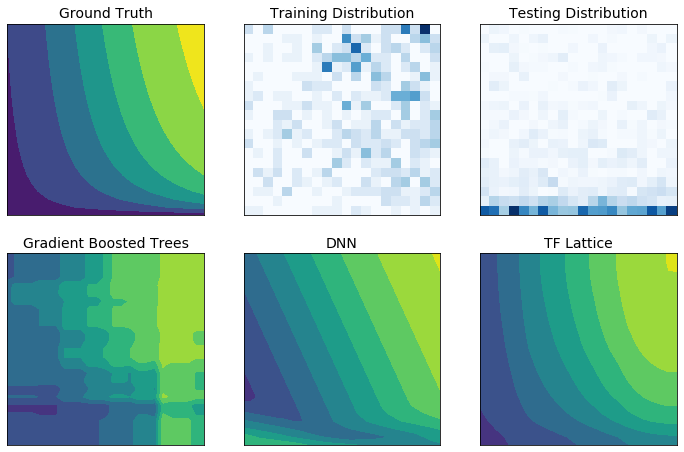ML גמיש, מבוקר וניתן לפרשנות עם מודלים מבוססי סריג
import numpy as np import tensorflow as tf import tensorflow_lattice as tfl model = tf.keras.models.Sequential() model.add( tfl.layers.ParallelCombination([ # Monotonic piece-wise linear calibration with bounded output tfl.layers.PWLCalibration( monotonicity='increasing', input_keypoints=np.linspace(1., 5., num=20), output_min=0.0, output_max=1.0), # Diminishing returns tfl.layers.PWLCalibration( monotonicity='increasing', convexity='concave', input_keypoints=np.linspace(0., 200., num=20), output_min=0.0, output_max=2.0), # Partially monotonic categorical calibration: calib(0) <= calib(1) tfl.layers.CategoricalCalibration( num_buckets=4, output_min=0.0, output_max=1.0, monotonicities=[(0, 1)]), ])) model.add( tfl.layers.Lattice( lattice_sizes=[2, 3, 2], monotonicities=['increasing', 'increasing', 'increasing'], # Trust: model is more responsive to input 0 if input 1 increases edgeworth_trusts=(0, 1, 'positive'))) model.compile(...)
TensorFlow Lattice היא ספרייה המיישמת מודלים מבוססי סריג מוגבלים וניתנים לפירוש. הספרייה מאפשרת לך להחדיר ידע תחום לתהליך הלמידה באמצעות אילוצי צורה מונחי הגיון או מדיניות . זה נעשה באמצעות אוסף של שכבות Keras שיכולות לספק אילוצים כמו מונוטוניות, קמורות וכיצד תכונות מתקשרות. הספרייה מספקת גם מודלים מוכנים מראש בקלות להגדרה.
עם TF Lattice אתה יכול להשתמש בידע בתחום כדי לבצע אקסטרפולציה טובה יותר לחלקים של מרחב הקלט שאינם מכוסים על ידי מערך ההדרכה. זה עוזר להימנע מהתנהגות מודל בלתי צפויה כאשר התפלגות ההגשה שונה מהתפלגות ההדרכה.




